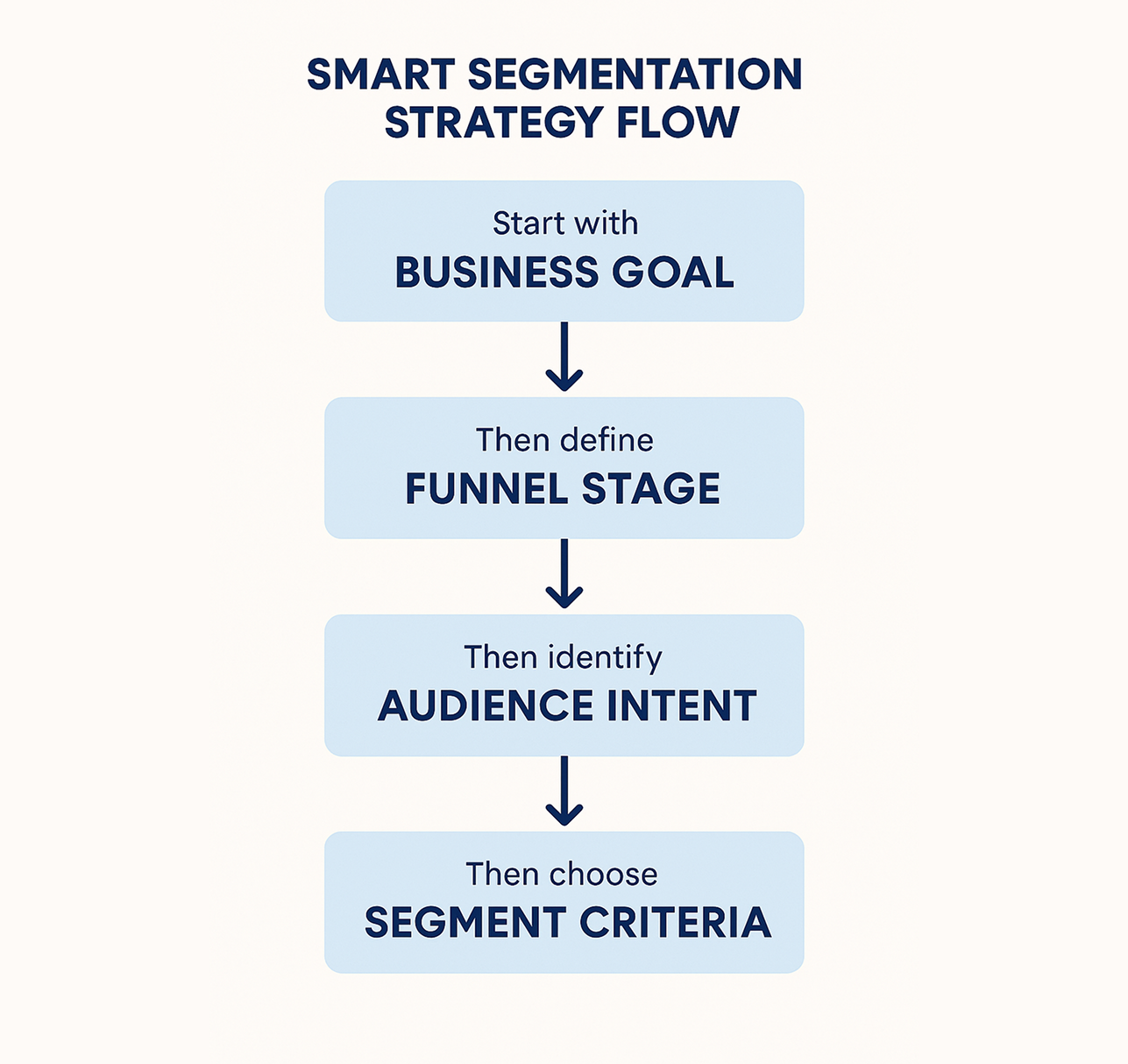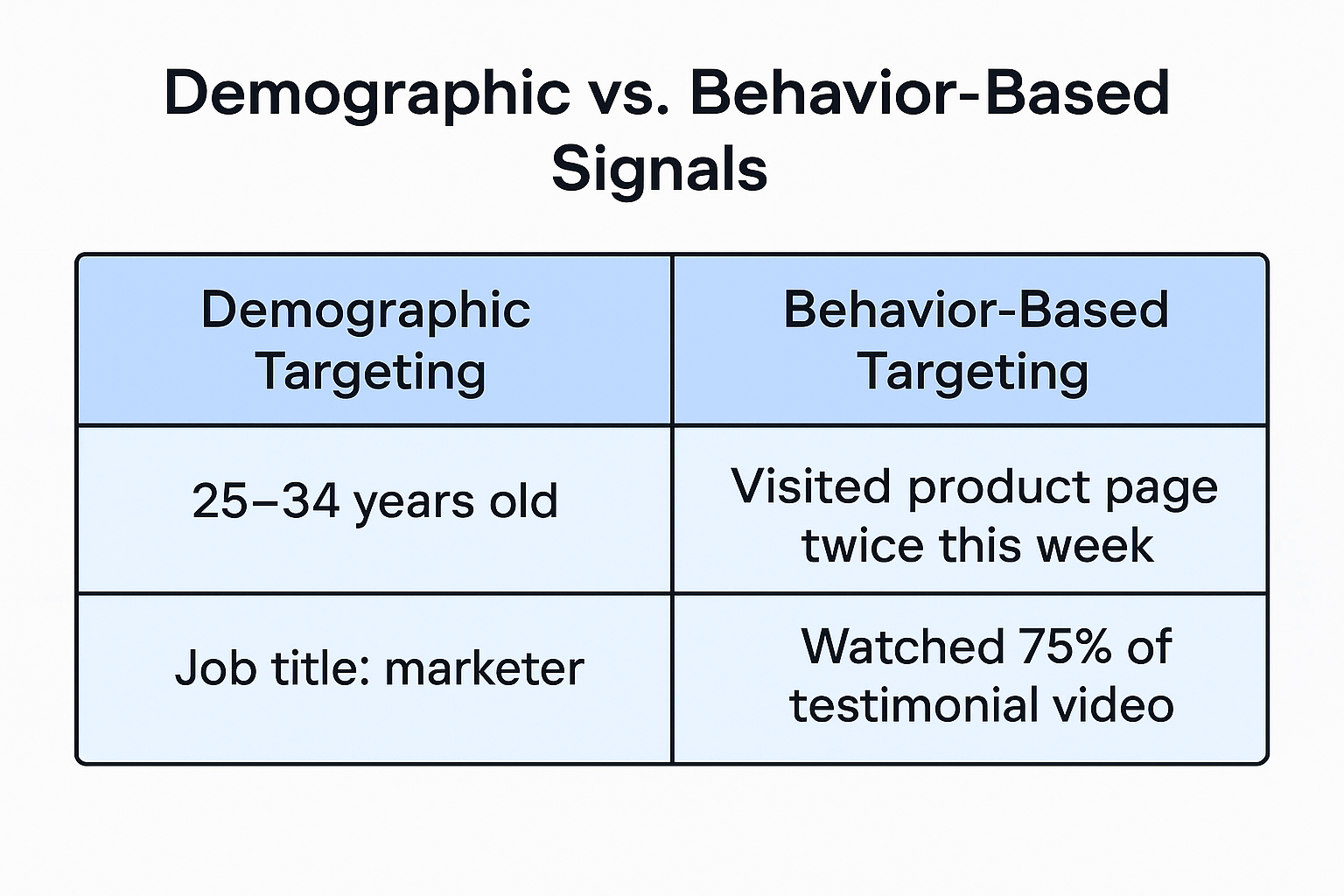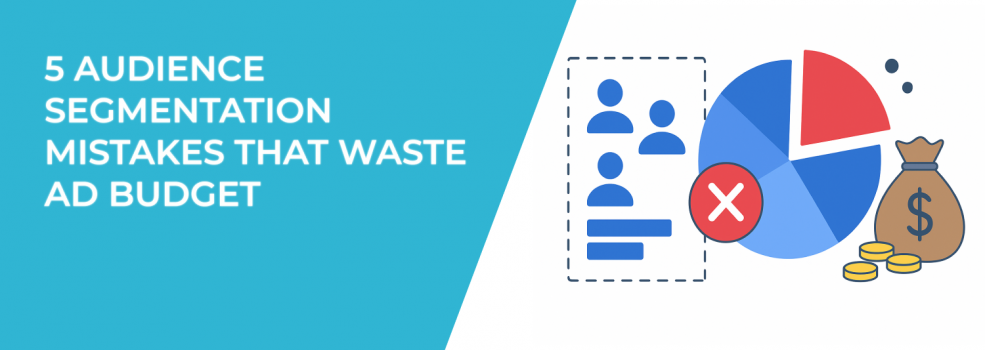Audience segmentation sounds smart in theory — more personalization, better targeting, higher ROI. But in practice? A lot of advertisers get it wrong. And when segmentation goes wrong, it burns through your ad budget faster than you think.
Let’s break down five common segmentation mistakes that quietly kill performance — and what to do instead if you want more clicks, better conversions, and less wasted spend.
1. Segmenting Without a Strategy
Sure, you can slice up your audience a dozen different ways — by age, gender, interest, behavior, or device. But ask yourself: why are you doing it?
Too many marketers create segments just because the platform allows it. The result? A bunch of disconnected micro-audiences that don’t ladder up to any real strategy.

Tip: Start with the outcome you want. Then work backward.
Ask:
-
Who’s most likely to convert right now?
-
What stage of the funnel are they in?
-
What message would actually move them?
Every segment should serve a purpose — otherwise, you're just creating complexity that costs you money.
For a helpful primer, see How to Define a Target Audience for Marketing: a Step-by-Step Guide.
2. Over-Segmenting to the Point of Data Decay
It feels smart to go hyper-targeted. But the more you split up your audience, the smaller each segment gets — and that leads to weak data signals. Platforms like Meta and Google struggle to optimize when you're feeding them tiny slices of information.
Worse, over-segmenting often increases CPMs. Fewer impressions, less reach, slower learning. You might get better engagement in theory, but your costs creep up while conversions stall.
Better approach: Use broader segments but tighter creative.
Let your copy and visuals do the job of appealing to different personas — not endless targeting rules.
If you're struggling with delivery issues, check out Why You See 'Ad Set May Get Zero' on Facebook and How to Fix It.
3. Ignoring Behavior-Based Targeting
Demographics are easy — but they’re shallow. Knowing someone’s age or job title tells you very little about what they’re actually interested in today.

If you're only targeting static traits, you’re missing the real signals:
-
What content did they interact with recently?
-
Did they visit your pricing page but bounce?
-
Have they added something to cart twice in the past week?
Behavior shows intent. And intent beats assumptions, every time.
Try this: Build audiences based on on-site actions or engagement. Use retargeting that reflects what they did, not just who they are.
Need a more advanced playbook? Dive into Behavior-Based Facebook Targeting: The Secret Weapon of Top E-commerce Brands.
4. Forgetting to Exclude
This one’s sneaky — and expensive. Advertisers often focus so much on who they want to include, they forget who to exclude.
You know what happens then?
You end up paying to show ads to people who’ve already bought. Or to low-value traffic that’ll never convert.
Set up smart exclusions, like:
-
Past purchasers (unless you’re upselling);
-
Unengaged visitors from previous campaigns;
-
Bounced traffic with low time on site.
These filters sharpen your targeting and stretch your budget further.
Want to go deeper? Read When to Use Exclude Targeting on Facebook and Why It Matters.
5. Using the Same Message Across Every Segment
Here’s a common trap: brands go through the effort of building segments, but then serve them all the same ad.
Different audiences = different motivations. Someone new to your brand needs education and trust. A returning visitor might just need a small nudge — like urgency or a discount.
Think about message–audience fit:
-
Cold leads → awareness hooks or problem-focused copy;
-
Warm leads → benefit-driven, low-friction offers;
-
Hot leads → testimonials, guarantees, or social proof.
Tailor your creative like you actually know who you're talking to — because with good segmentation, you do.
For full-funnel messaging tips, see Facebook Ads Funnel Strategy: From Audience Identification to Conversion.
Final Thoughts: Simpler Can Be Smarter
If your segments are too complex to manage, or your ads don’t reflect audience differences, your performance will suffer — even if your targeting looks sophisticated on paper.
Take a moment to audit your segments. Are they based on behavior or assumptions? Are they helping your platform learn faster — or slowing it down?

